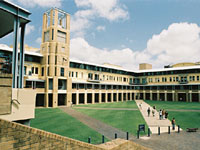Australia 1788-1900: The Fatal Shore? - ARTS2270
Faculty: Faculty of Arts and Social Sciences
School: School of Humanities and Languages
Course Outline: School of Humanities & Languages
Campus: Sydney
Career: Undergraduate
Units of Credit: 6
EFTSL: 0.12500 (more info)
Indicative Contact Hours per Week: 3
Enrolment Requirements:
Prerequisite: 30 units of credit at Level 1
CSS Contribution Charge: 1 (more info)
Tuition Fee: See Tuition Fee Schedule
Further Information: See Class Timetable
Available for General Education: Yes (more info)
View course information for previous years.
Description
Subject Area: History
This course can also be studied in the following specialisation: Australian Studies
This course examines the history of Australia from colonisation to Federation. It takes as its starting point the various ways in which Australia’s fascinating early history has been sensationalised, glorified, suppressed, sterilised, whitewashed and ‘normalised’ in film, novel, painting, journalism and history, and seeks to examine the historical record in light of such representations. It explores the complex webs of interaction between Imperial policy, Indigenous resistance and the political ideals and personal ambitions of successive waves of immigrants who shaped and reshaped colonial societies. In 1788 a small contingent of British convicts and military men built a village on the coast of Eora country, naming it in honour of the Home Secretary, Lord Sydney; by 1901 settlers all over the continent were coming to identify as a nation, imagined within a British Imperial framework that excluded Indigenous people and Asians.
This course will examine the processes underpinning this transformation: the dynamics of convict societies and their legacies; the on-going contests for land; the place of sexuality and gender relations in shaping everyday life and political movements; Eureka, the goldfields and struggles for democracy in history and memory; ‘coloured’ labour and the development of White Australia; working class politics; and the legends of the 1890s.









